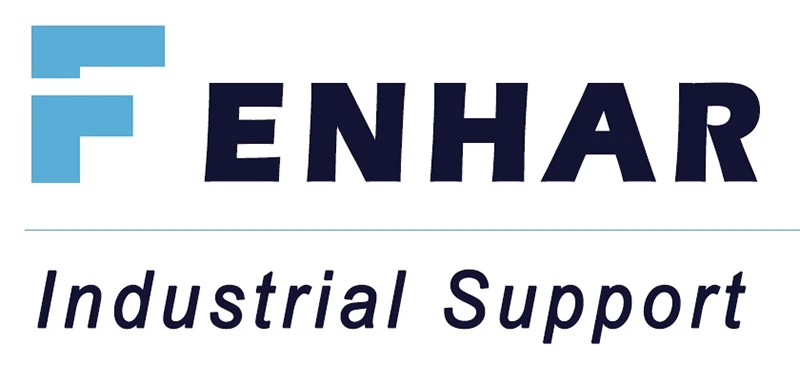In de productie van elektrische voertuigen (EV) zijn isolatieplaten van cruciaal belang om de veiligheid, efficiëntie en levensduur van batterijen te garanderen. Deze platen voorkomen kortsluiting, bieden thermische stabiliteit en fungeren als beschermende barrières in hoogspanningsbatterijmodules. In dit artikel worden de materialen, typen en primaire functies van isolatieplaten bij de assemblage van EV-batterijen onderzocht, met de nadruk op FR4, G10G11 en GPO3, waarbij hun individuele voordelen en toepassingen worden belicht.

Waarom isolatieplaten belangrijk zijn bij de assemblage van EV-batterijen
EV-batterijen zijn hoogspanningssystemen met een groot aantal afzonderlijke cellen en modules die dicht op elkaar zitten. Isolatieplaten vormen een vitale veiligheidsbarrière tussen deze cellen om kortsluiting te voorkomen, elektrische stabiliteit te garanderen en efficiënt warmtebeheer te ondersteunen. Deze platen moeten bestand zijn tegen hoge temperaturen, mechanische spanningen en elektrische eisen, waardoor de materiaalkeuze essentieel is voor veiligheid en duurzaamheid.
Belangrijkste isolatiemateriaal voor EV-batterijen
Laten we eens kijken naar de primaire isolatiematerialen die worden gebruikt in EV-batterijsystemen en hun verschillende rollen.
FR-4 Epoxy Glasvezelplaten
Materiaalsamenstelling en -eigenschappen:
FR-4 platen zijn gemaakt van epoxyhars versterkt met glasvezel en bieden een indrukwekkende elektrische isolatie en mechanische sterkte. Ze zijn zeer hittebestendig en hebben een lage vochtabsorptie, waardoor ze ideaal zijn voor de thermische en elektrische vereisten in EV-batterijmodules.
Toepassingen in EV-batterijen:
FR-4 wordt vaak gebruikt als interne isolatielaag tussen cellen en voor structurele ondersteuning in batterijpacks. Dankzij de uitstekende vlambestendigheid verhoogt FR-4 de veiligheid door het risico op ontbranding te verminderen, zelfs bij zware belasting of hoge temperaturen.
G-10 epoxy glasplaten
Materiaalsamenstelling en -eigenschappen:
Vergelijkbaar met FR-4, is G-10 samengesteld uit glasvezelversterkte epoxyhars, die hoge mechanische sterkte en opmerkelijke isolatie verstrekt. G-10 mist echter enkele van de vlamvertragende eigenschappen van FR-4, hoewel het vergelijkbare bestendigheid tegen extreme temperaturen deelt.
Toepassingen in EV-batterijen:
G-10 platen worden gewaardeerd om hun betrouwbaarheid en duurzaamheid, waardoor ze geschikt zijn voor omgevingen waar mechanische stabiliteit cruciaal is. Ze dienen als een effectieve isolatielaag en ondersteunende structuur, vooral in batterijpacks waar een hoge duurzaamheid vereist is.
G-11 epoxy glasplaten
Materiaalsamenstelling en -eigenschappen:
G-11 platen zijn ook epoxy-vezelcomposieten maar zijn ontworpen om nog hogere temperaturen aan te kunnen dan FR-4 of G-10. Met een uitstekende thermische stabiliteit kan G-11 isolatie temperaturen van meer dan 180°C aan. Dankzij de uitstekende thermische stabiliteit is G-11 isolatie bestand tegen temperaturen van meer dan 180°C, waardoor de elektrische isolatie zelfs onder extreme omstandigheden behouden blijft.
Toepassingen in EV-batterijen:
G-11 is een ideale keuze voor krachtige elektrische voertuigen met geavanceerde batterijvereisten. Deze printplaten worden vaak gebruikt in batterijmodules waar overmatig warmtebeheer cruciaal is, zodat de batterij operationeel blijft, zelfs tijdens krachtige ontladingen.
GPO-3 Polyester Glasplaten
Materiaalsamenstelling en -eigenschappen:
GPO-3 de raad wordt gemaakt van glasvezel-versterkte polyesterhars, die uitzonderlijke elektroisolatie en vlamweerstand aanbiedt. Bovendien heeft GPO-3 een uitstekende boogweerstand, waardoor het een vertrouwd materiaal is in hoogspanningstoepassingen.
Toepassingen in EV-batterijen:
GPO-3 wordt veel gebruikt in vermogenscomponenten van batterijsystemen, zoals stroomrails en elektrische isolatoren. Het is ideaal voor hoogspanningssystemen van elektrische voertuigen waar boogweerstand kritisch is. Het vermogen van GPO-3 om bestand te zijn tegen hoge temperaturen en elektrische spanningen maakt het ook geschikt voor toepassingen in voedingsmodules en aansluitpunten.
Het juiste isolatiemateriaal kiezen: Belangrijke overwegingen
Bij het kiezen van het juiste isolatiemateriaal voor een EV-batterijpak moeten meerdere factoren tegen elkaar worden afgewogen:
- Temperatuurbestendigheid: FR-4 en G-11 zijn ideaal voor omgevingen met hoge temperaturen, waarbij G-11 het beste is voor extreme temperaturen.
- Elektrische isolatie: GPO-3 blinkt uit in vlamboogbestendigheid en elektrische isolatie, perfect voor hoogspanningscomponenten.
- Mechanische duurzaamheid: Voor gebieden die structurele ondersteuning nodig hebben, bieden G-10 en FR-4 een sterke mechanische veerkracht.
- Kosten en bruikbaarheid: FR-4 en GPO-3 zijn over het algemeen kosteneffectiever terwijl ze nog steeds uitstekende prestaties leveren, waardoor ze populair zijn in verschillende EV-batterijconfiguraties.

Laatste gedachten
Naarmate de technologie van elektrische voertuigen zich ontwikkelt, geven isolatiematerialen zoals FR-4, G-10, G-11 en GPO-3 vorm aan de toekomst van batterijveiligheid en -efficiëntie. Elk materiaal biedt unieke sterke punten, van thermische stabiliteit tot mechanische duurzaamheid, die de betrouwbare prestaties van EV-batterijpacks ondersteunen. Door de eigenschappen en toepassingen van deze isolatieplaten te begrijpen, kunnen fabrikanten veiligere en duurzamere accu's maken die de sleutel vormen tot de EV-revolutie.
